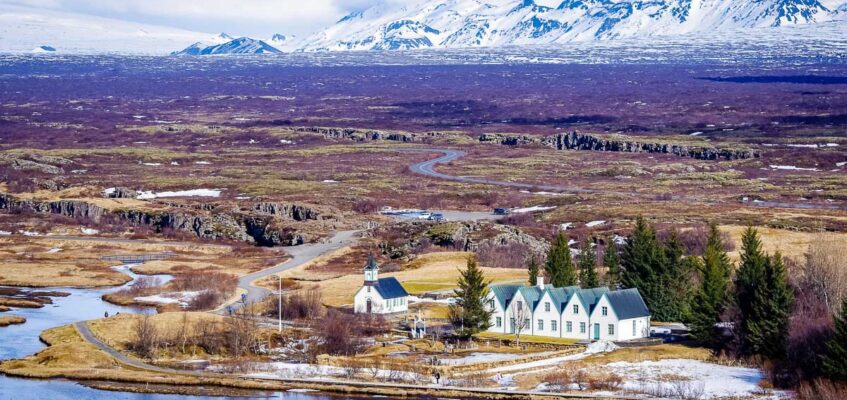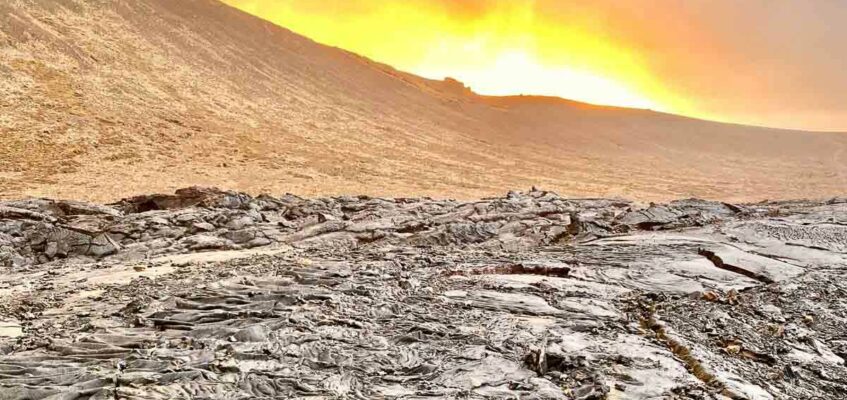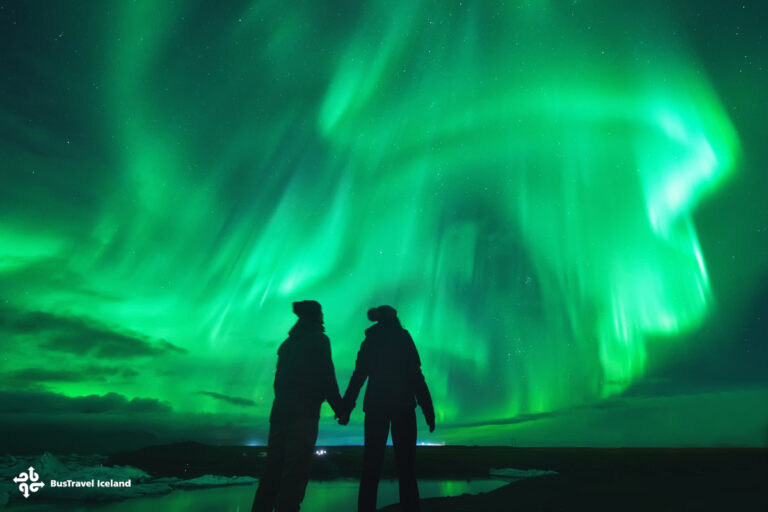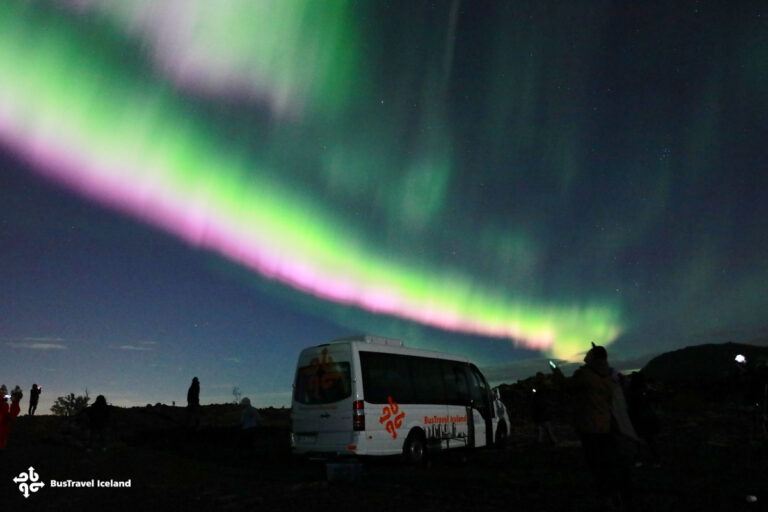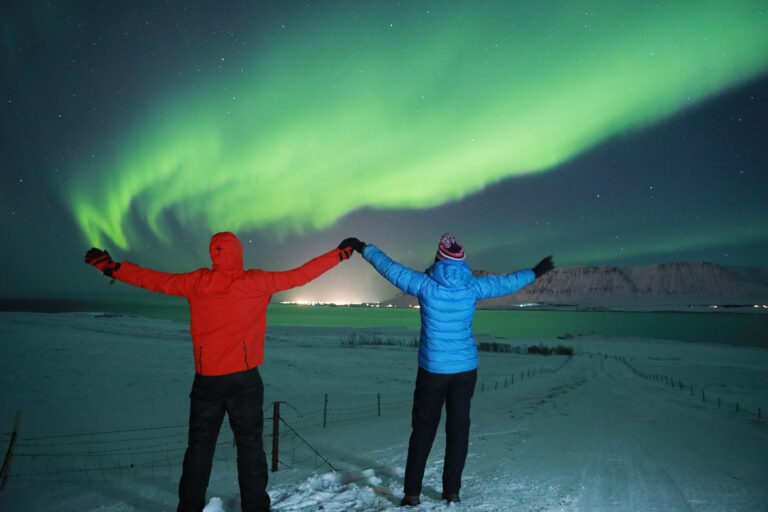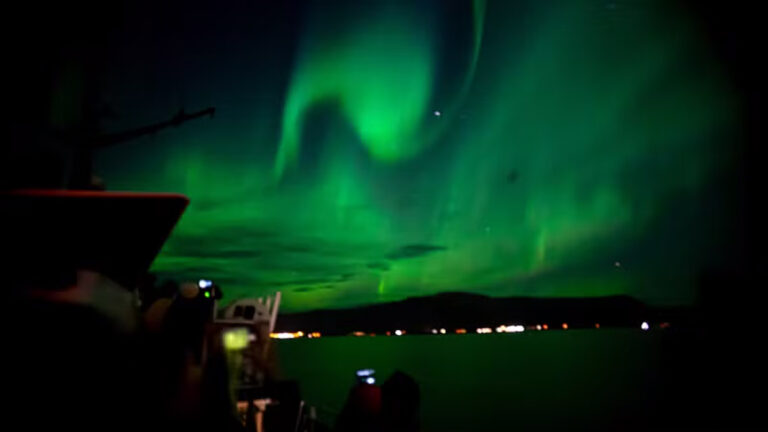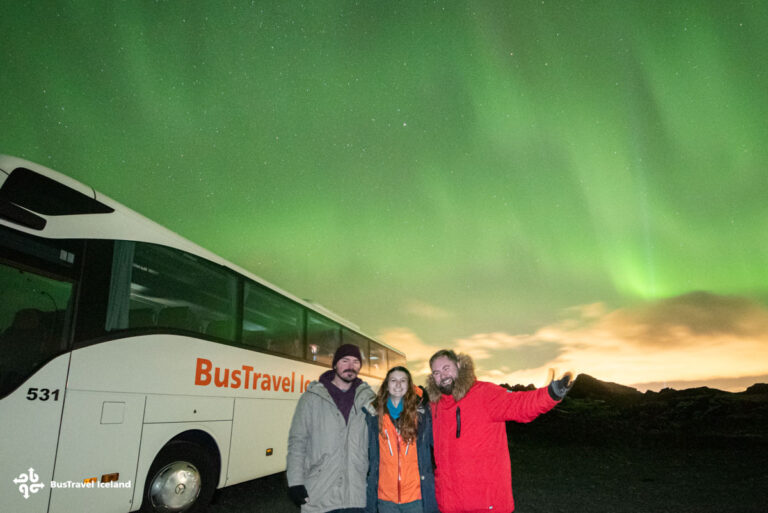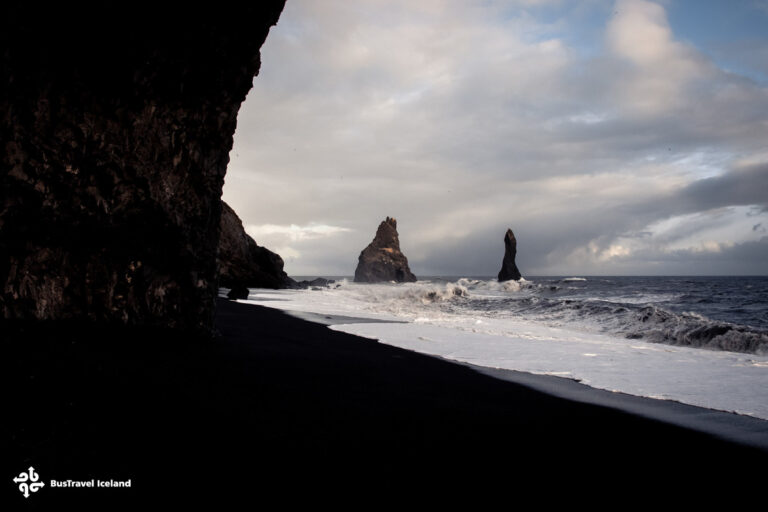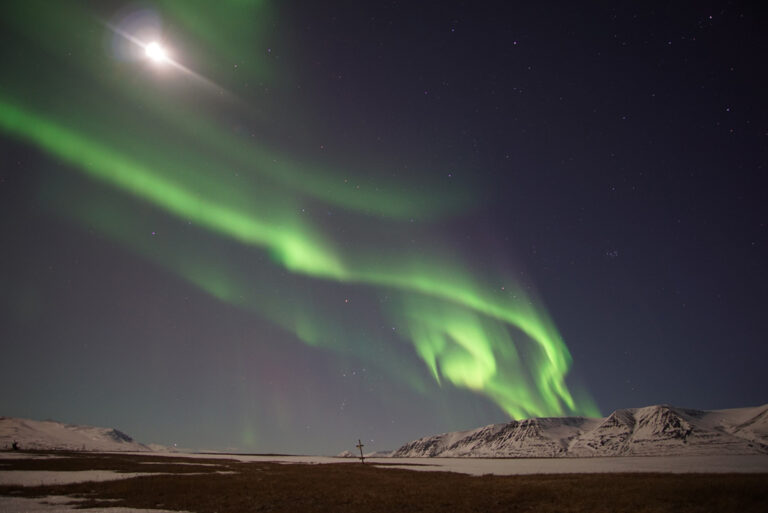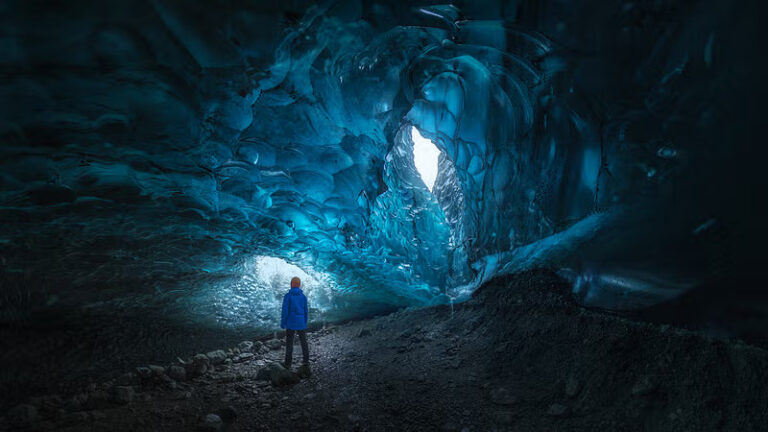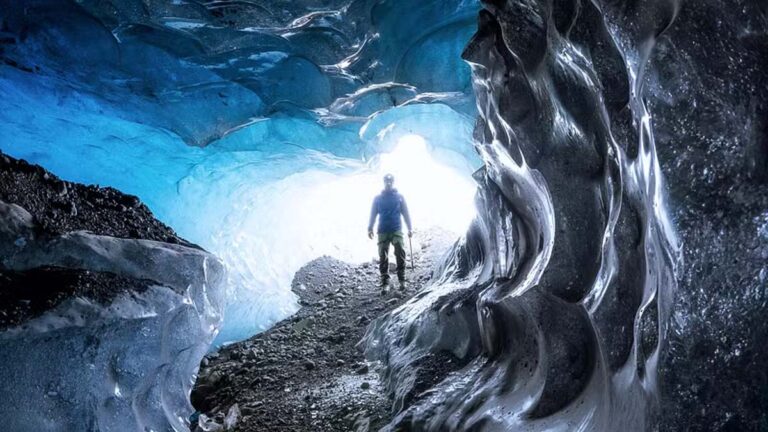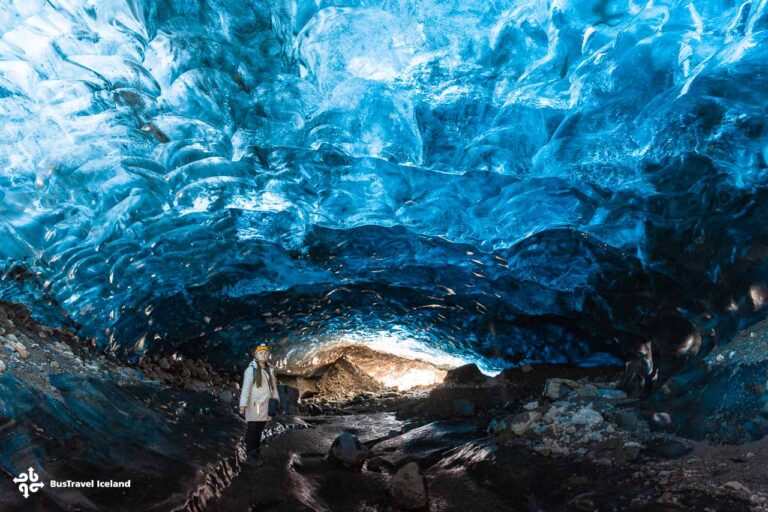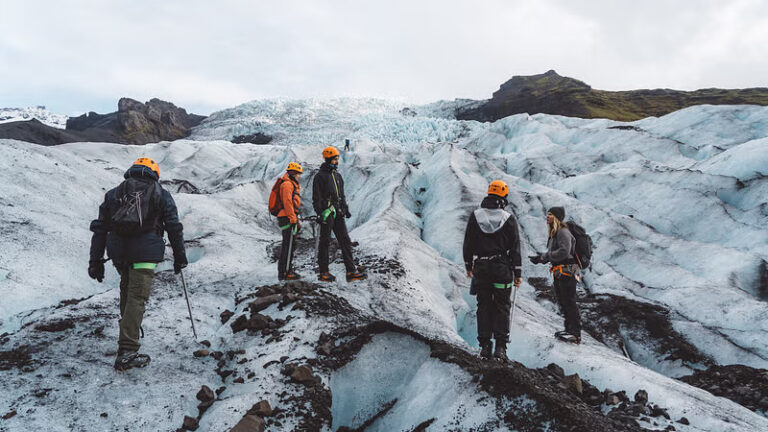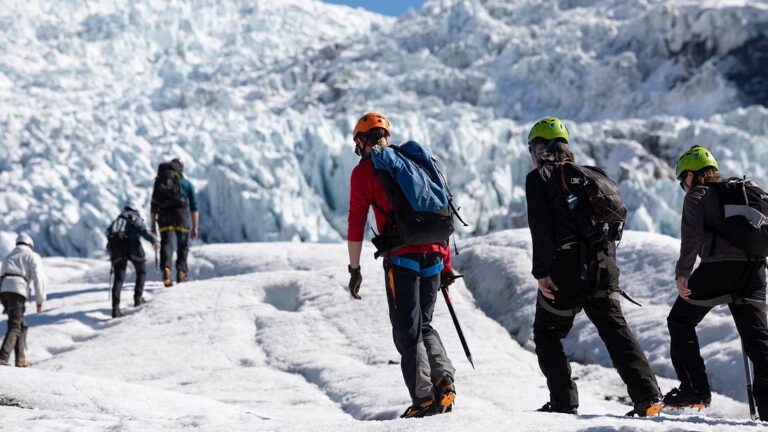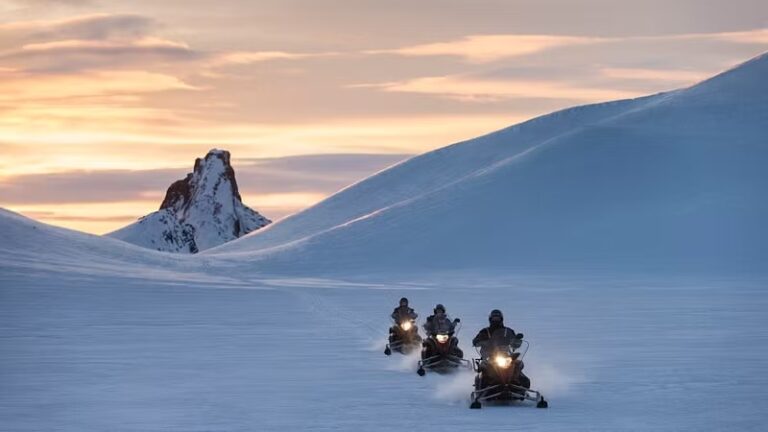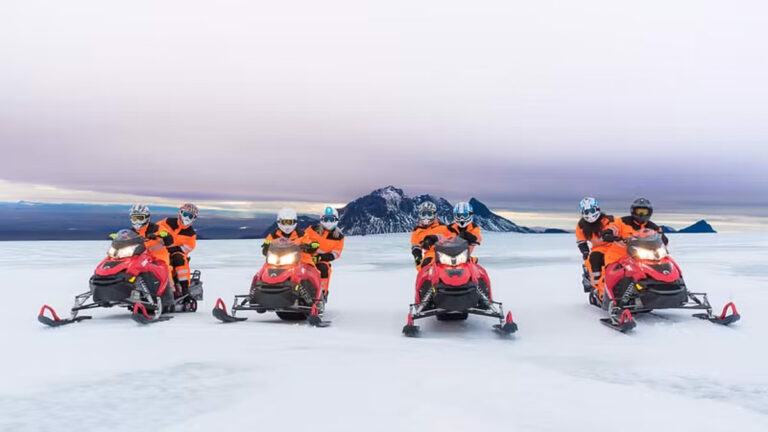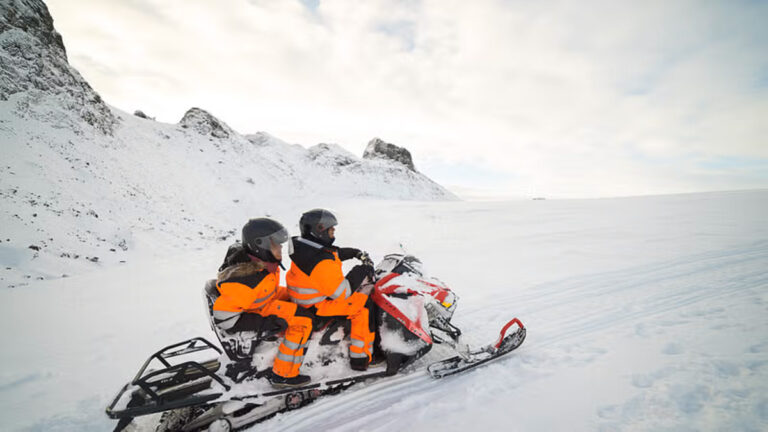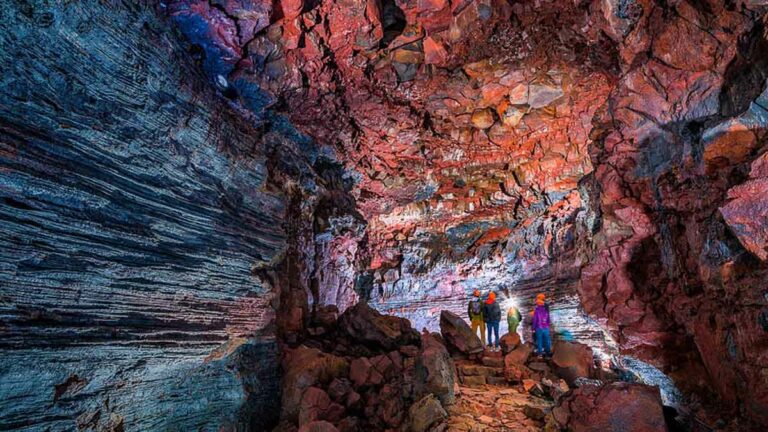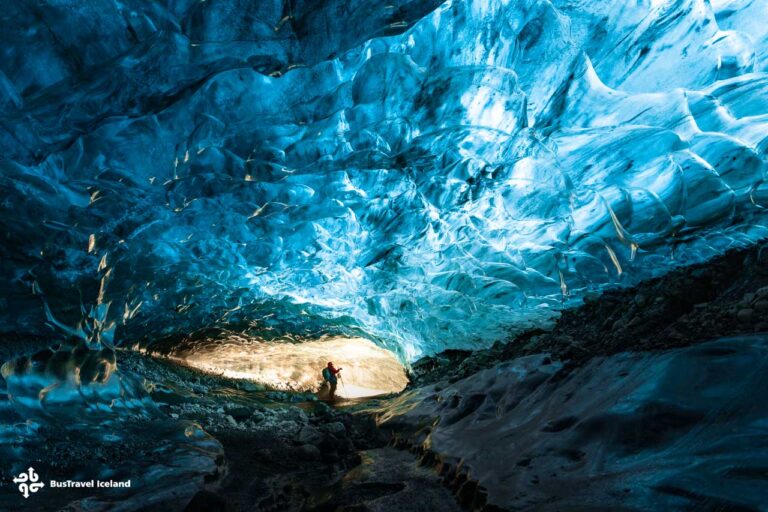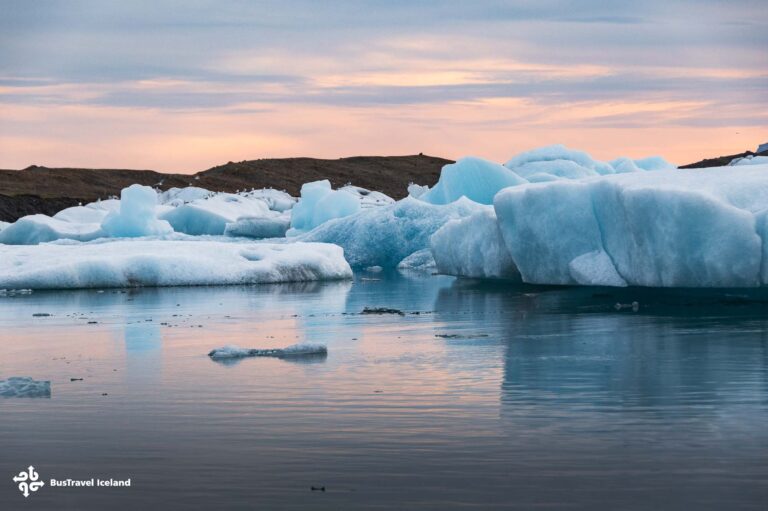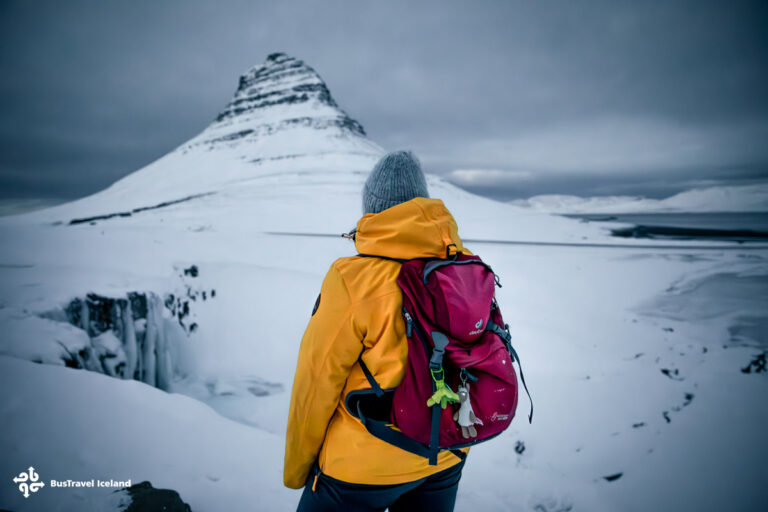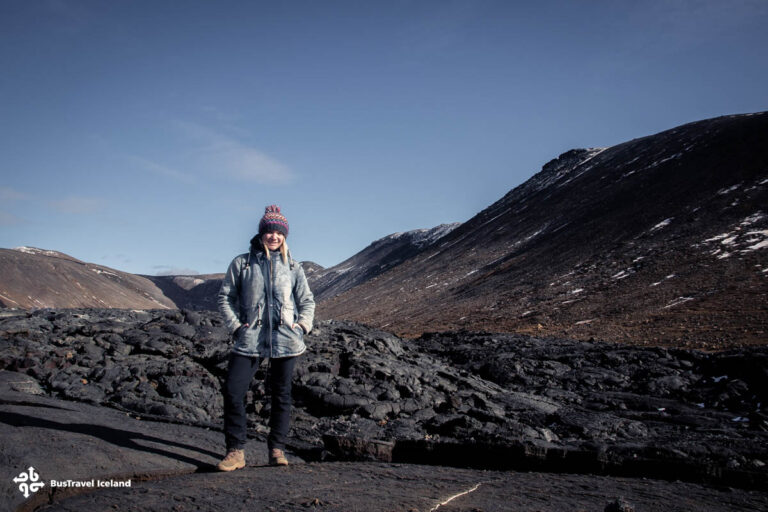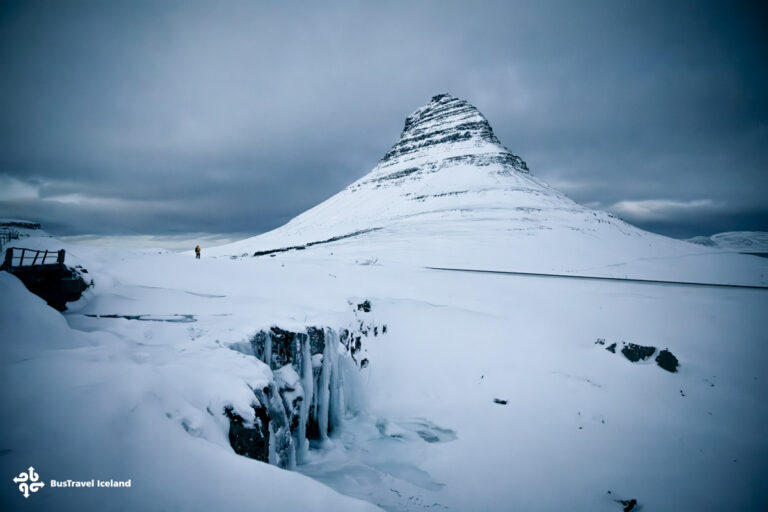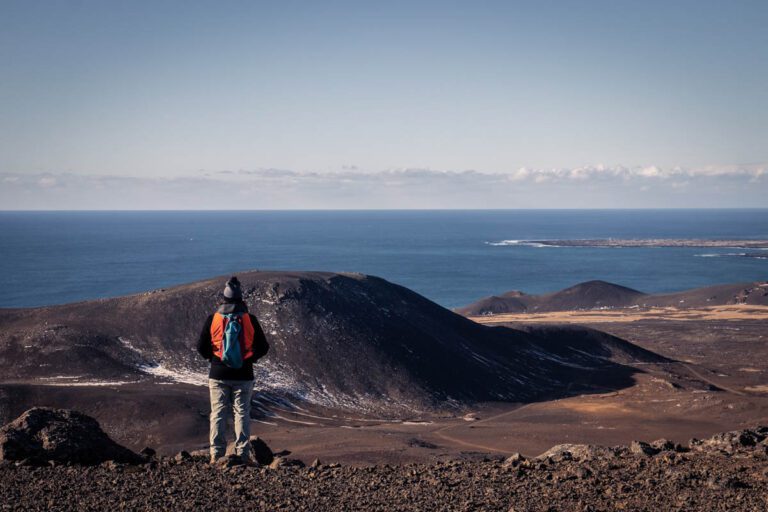The Essential Guide to Visiting Iceland in December
- Iceland by Month
- 13 Nov 2025
December in Iceland is pure Arctic drama — frozen waterfalls, black sand beaches, and skies alive with the Northern Lights. Reykjavik glows with Christmas lights, and remote landscapes offer stark beauty under pale winter sun.

It’s not for the faint-hearted: short days and unpredictable weather demand flexibility. But for travelers seeking raw natural spectacle, Iceland in December delivers a once-in-a-lifetime experience.
Before you board your flight to Iceland’s winter wonderland, a few questions naturally arise: What’s the weather like in December? How can you stay warm while chasing the Northern Lights? Should you join guided tours or brave the icy Icelandic roads on your own? This guide answers all of those questions — and more — with reliable, up-to-date information to help you plan an unforgettable December adventure in Iceland.
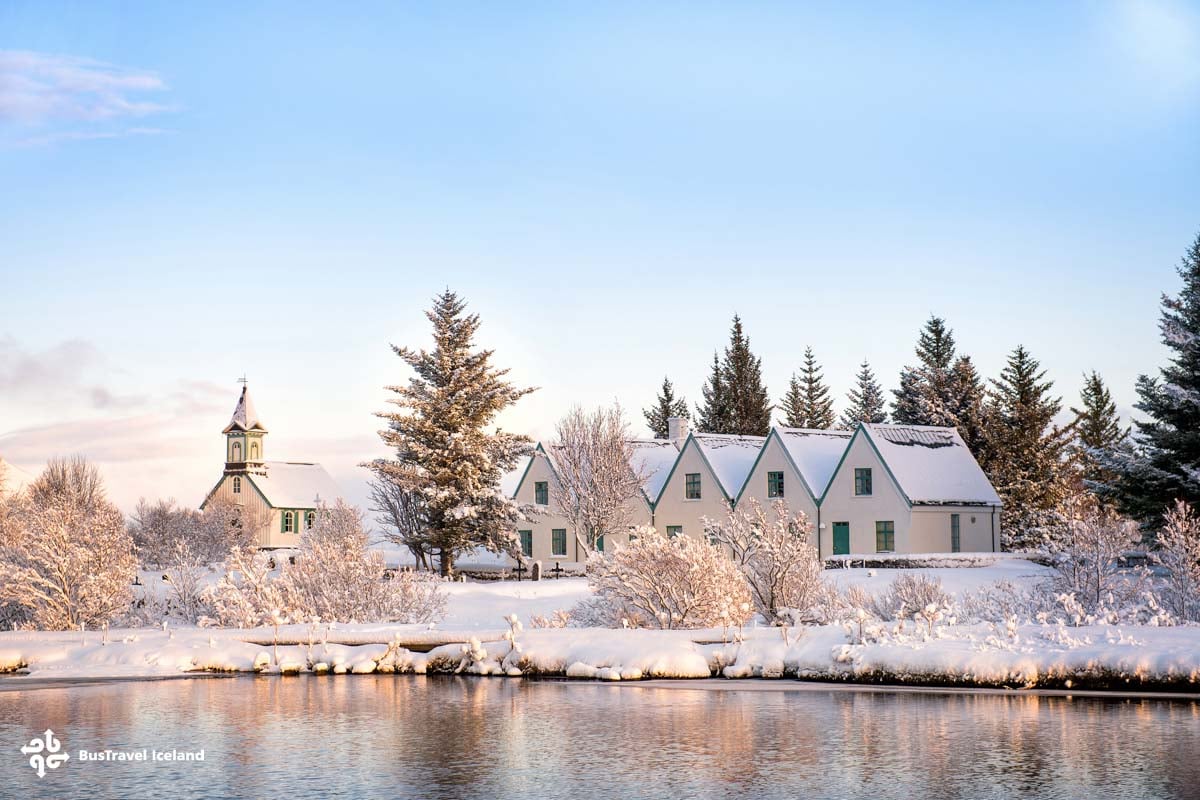
The Weather in Iceland in December
December in Iceland is a month of contrasts, where icy landscapes meet long twilights and fleeting daylight. Understanding Iceland’s December weather helps you prepare for both comfort and adventure, whether you’re exploring Reykjavík’s cozy streets or venturing into the northern wilderness of Akureyri.
Coastal Mildness in Reykjavík
In the southwest, Reykjavík experiences relatively mild winter conditions by Icelandic standards. Average daytime temperatures hover around 1 °C (34 °F), dipping to –2 °C (28 °F) at night. On rare occasions, December highs can climb to 12 °C (54 °F), while unusually cold spells can push the mercury below freezing for extended periods.
Even on milder days, the combination of damp air and brisk coastal winds can make it feel much colder. Snow and rain showers are common in Reykjavik in winter, and the nearby sea remains icy at around 6–7 °C (43–44 °F). With only 4–5 hours of daylight, the city is bathed in long, soft twilights, offering perfect conditions for photography and evening strolls under the city’s festive lights.
The Northern Chill in Akureyri
Further north, Akureyri faces harsher winter conditions. Average highs in December hover around –3 °C (27 °F), with lows around –9 °C (16 °F). Snowfall is heavier here than in the south, often accumulating over 19 days in the month. Combined with high humidity, the cold can feel especially penetrating. Daylight is even shorter than in Reykjavík, lasting only 3 to 4½ hours, and winter storms can arrive suddenly, transforming roads into icy pathways.
Akureyri is also home to occasional extremes: record December highs have reached 15 °C (59 °F), while severe cold snaps can push temperatures far below average. Travelers should always be prepared for rapidly changing conditions, especially if venturing outside town or exploring the surrounding mountains.

Temperatures After Dark
Temperatures drop quickly after sunset. Coastal areas like Reykjavík may hover around –3 to –5 °C (23–27 °F), while northern regions such as Akureyri can reach –10 °C (14 °F) or lower. Wind chill can make it feel much colder, especially in exposed areas near mountains, fjords, or the coastline. Dressing in layers, including a warm hat, gloves, and insulated boots, is essential for comfort during extended outdoor observation when you are up for a Northern Lights hunt.
Visiting Iceland in December
Visiting Iceland in December comes with both remarkable opportunities and practical considerations. The short winter days, often only four to six hours of daylight, are ideal for chasing the Northern Lights, exploring snow‑dusted landscapes, and witnessing waterfalls and geysers framed in ice. The festive season brings charming holiday lights and cultural events to Reykjavík and smaller towns, adding warmth and magic to the crisp winter air.
Traveling to Iceland in December requires planning around the weather. Flights are generally reliable, but sudden storms can cause delays, and some remote accommodations may have limited availability. With December temperatures in Iceland often cold, proper winter gear is essential: insulated layers, waterproof outerwear, and sturdy boots are necessary for comfort and safety, whether you are exploring city streets, venturing on day tours, or hiking near glaciers. Guided tours are particularly valuable in winter, as local operators know how to navigate short days, unpredictable conditions, and hidden winter gems safely.
Driving in Iceland’s winter during December is an experience in itself. Roads are often icy, and weather can change rapidly, making winter tires and familiarity with safe winter-driving practices essential. Many travelers opt to join guided excursions instead of self-driving, especially for longer routes like the South Coast or Snæfellsnes Peninsula, where conditions can be challenging. For those who do choose to drive, sticking to well-maintained routes and checking road and weather updates regularly ensures a safer and more enjoyable adventure.
────────────────────────────────────────
Please read Iceland in November to learn more about Iceland.
────────────────────────────────────────
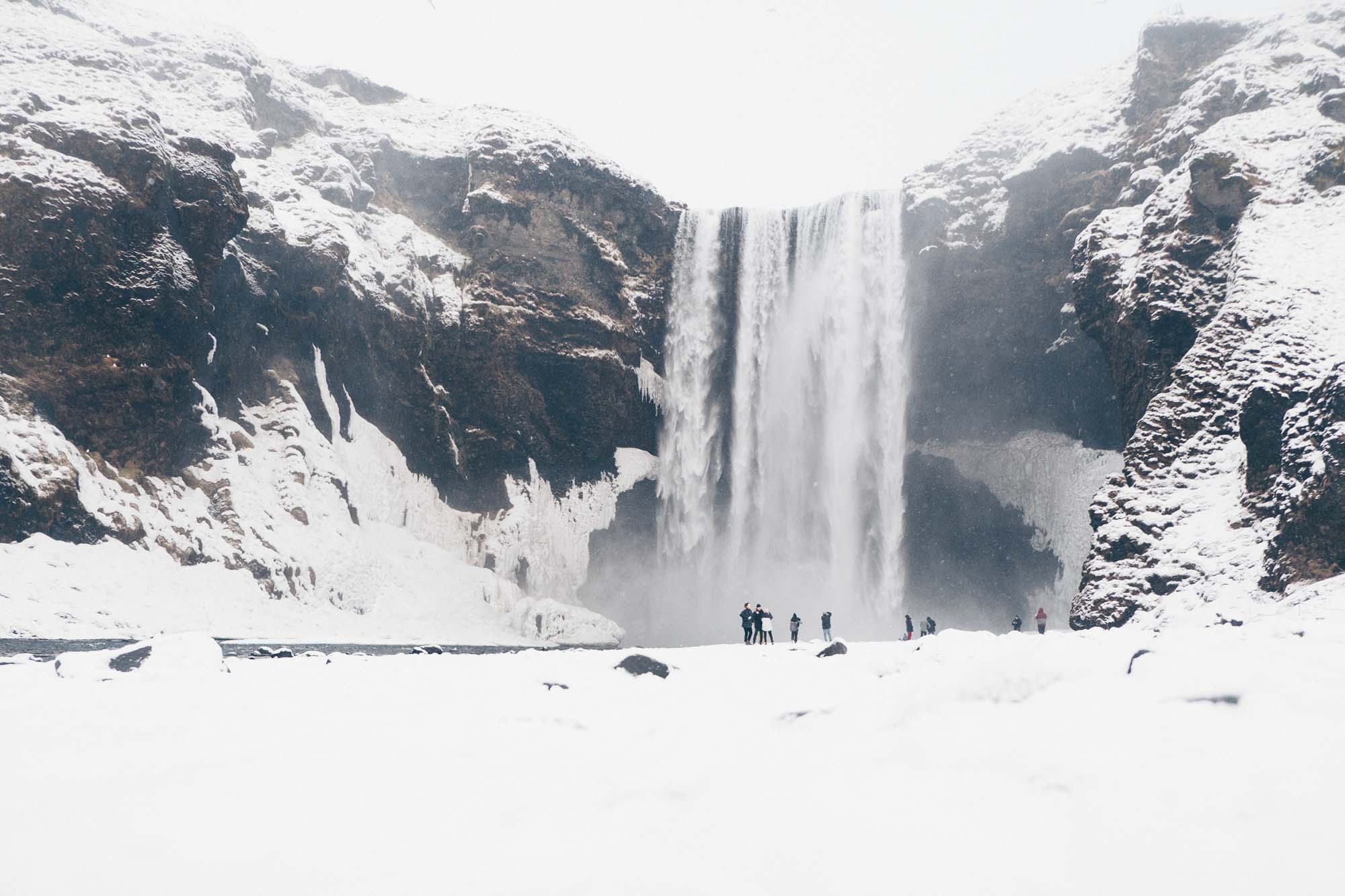
Christmas in Iceland – Iceland’s December Holiday
What I like the most about December in Iceland is the festive transformation in which every house displays lights and decorations, casting a warm glow across snow-dusted streets.
The December holiday season in Iceland is a unique blend of Nordic tradition, modern celebration, and winter magic. From Reykjavík’s glowing streets to remote snow-dusted villages, Christmas in Iceland and its New Year’s celebration offer a festive and cultural experience unlike any other.
The Yule Lads and Icelandic Folklore
Central to Icelandic Christmas traditions are the Yule Lads — thirteen mischievous figures who visit children on the thirteen nights leading up to Christmas. Each Yule Lad has a distinct personality, from pranksters to harmless troublemakers, and children leave shoes on their windowsills in anticipation of small gifts or treats. This folklore, combined with stories of the Yule Cat and other mythical figures, gives Icelandic Christmas a whimsical, distinctly local flavor.
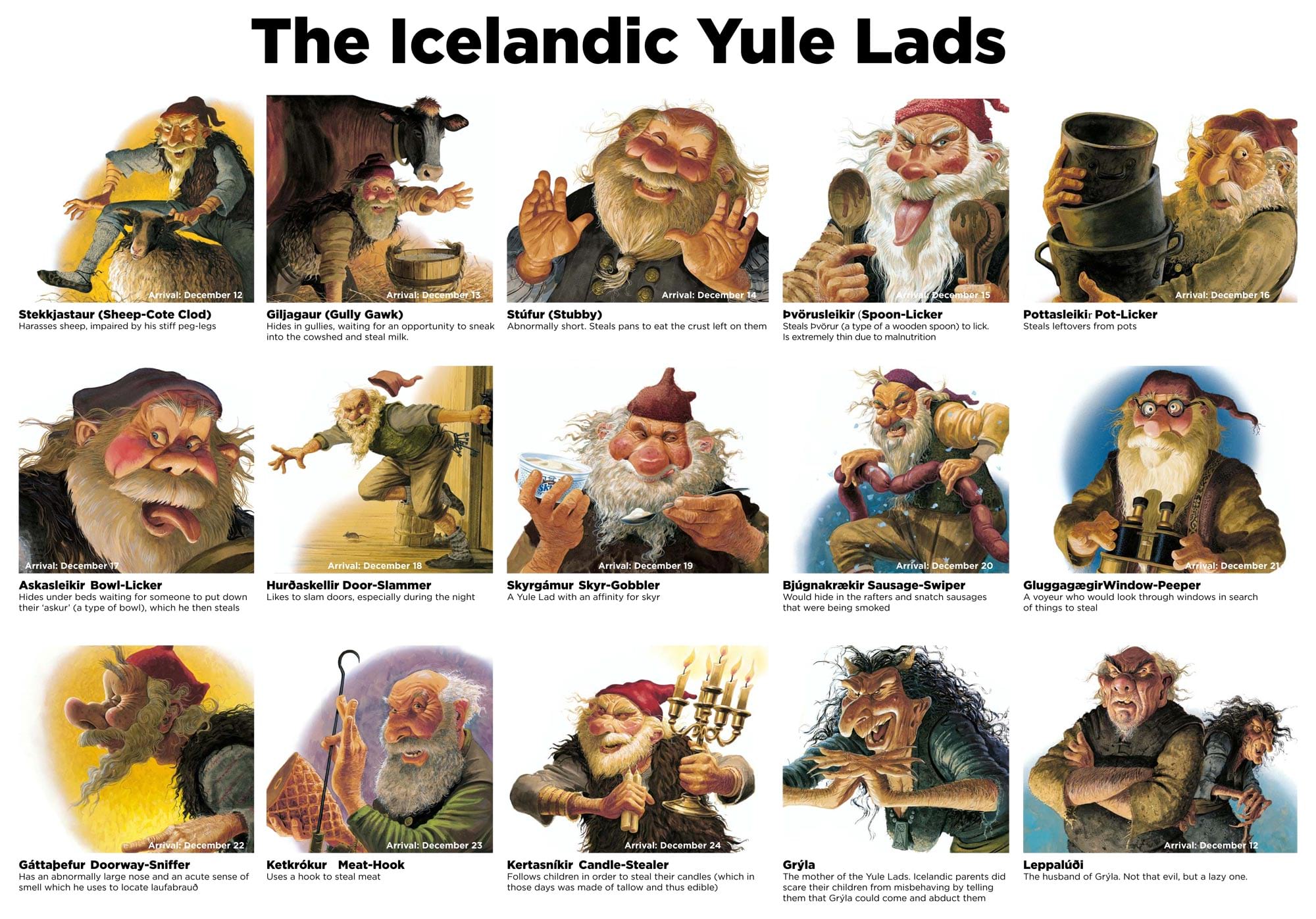
Reykjavik: Lights, Markets, and Festivities
The capital city embraces the season with style. Streets are adorned with lights, the main shopping areas bustle with Christmas markets – you can check out the one in downtown Reykjavik, and another lovely one in downtown Hafnarfjordur – and public squares host seasonal concerts and cultural events. Local bakeries offer traditional treats such as laufabrauð (thin, patterned fried bread) and jólakaka (Christmas cake), while cafés serve warming drinks that provide a welcome respite from the chilly winter air.

Winter Activities and Community Traditions
Icelanders celebrate the season with outdoor and indoor festivities. From Christmas concerts and church services to winter swimming and geothermal pool visits, there’s a strong focus on communal experiences. Towns across the country organize small fairs, handicraft markets, and cultural events that highlight Icelandic traditions.
Despite the short days — with only a few hours of sunlight — the long nights are filled with warmth, light, and a sense of togetherness. For travelers, this is an opportunity to experience a Nordic Christmas in a uniquely Icelandic setting: festive yet intimate, traditional yet playful.
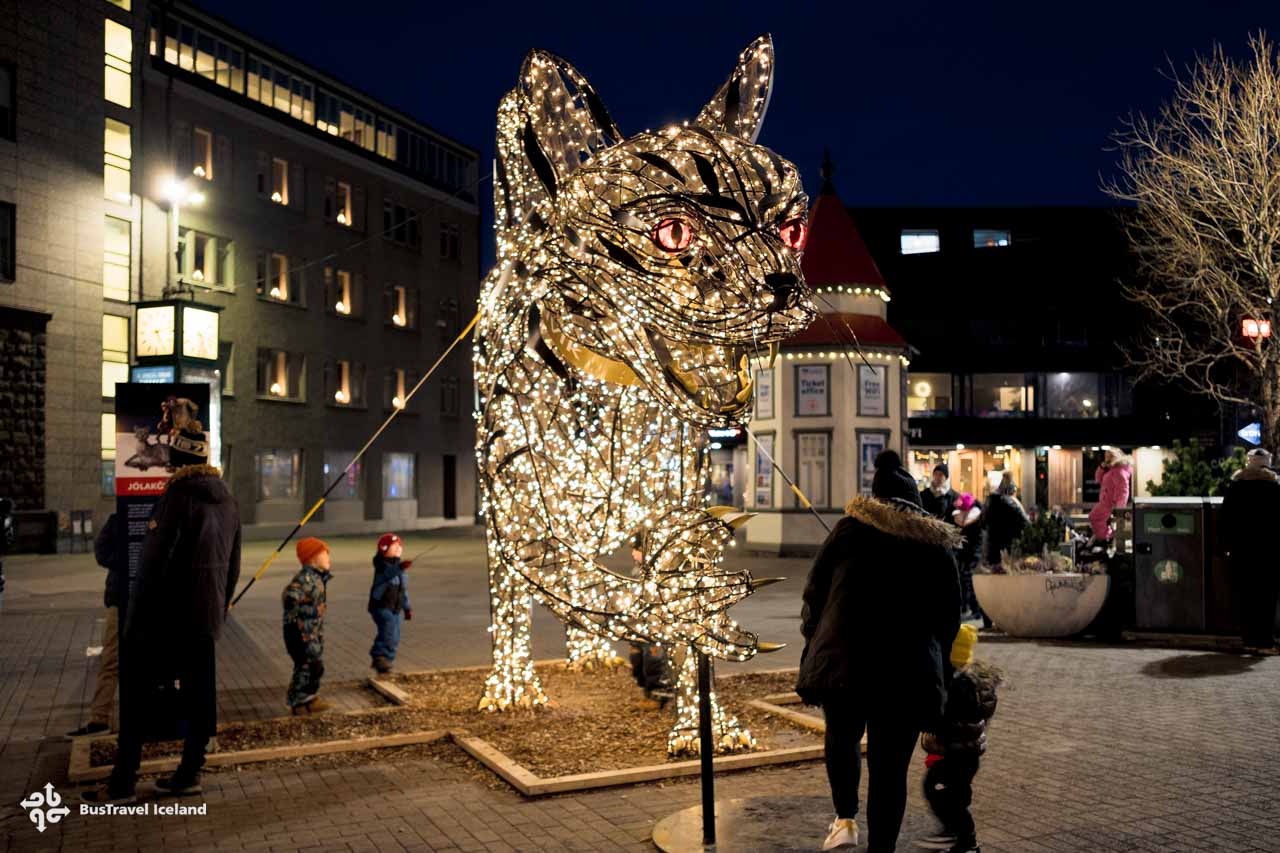
Iceland’s New Year’s Eve Tradition
New Year’s Eve in Iceland is one of the most spirited and anticipated nights of the year — a celebration that fuses fire, laughter, and community under the long Arctic night.
Bonfires and Community Spirit
The evening begins with Áramótabrennur, traditional community bonfires held in towns and villages across the country. Families and friends gather around the flames to sing, talk, and reflect on the past year. The bonfire tradition — symbolizing renewal and letting go of the old — is a cornerstone of Icelandic New Year’s culture, setting the tone for the night ahead.
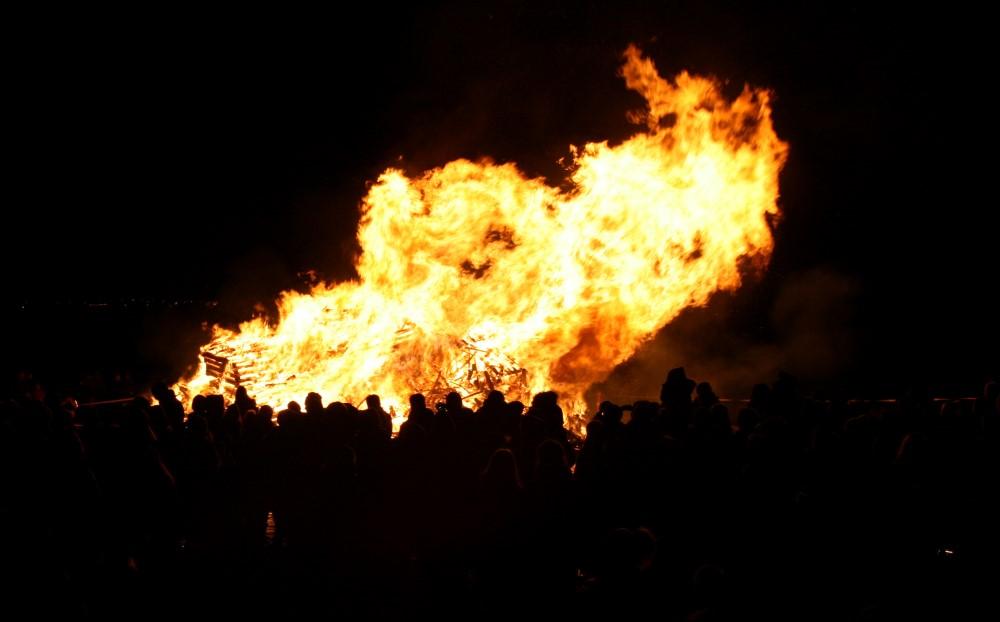
The Beloved TV Comedy Special
At around 10:30 p.m., much of Iceland goes quiet. Streets empty and homes light up their screens for Áramótaskaupið, a one-hour satirical comedy show that’s been a national ritual since the 1960s. The program humorously reviews the past year’s events — from politics to pop culture — and is watched by over 80% of the population. It’s a shared moment of laughter before the chaos of midnight begins.
Fireworks and Midnight Magic
Once the show ends, the calm gives way to an explosion of color. Icelanders pour into the streets, lighting fireworks in every direction. Unlike most countries, these displays aren’t organized by the government but by individuals — fireworks are sold by Iceland’s rescue teams as their main fundraiser of the year. The result is an uncoordinated yet breathtaking spectacle of sound and light across the entire skyline.
For those looking for an extraordinary view, the New Year’s Eve Fireworks Boat Tour from Reykjavík harbor offers a front-row seat to the action. As the boat sails into Faxaflói Bay, the reflection of the city’s fireworks shimmers across the water, creating a 360-degree panorama of light against the dark winter sea — a truly unforgettable experience.
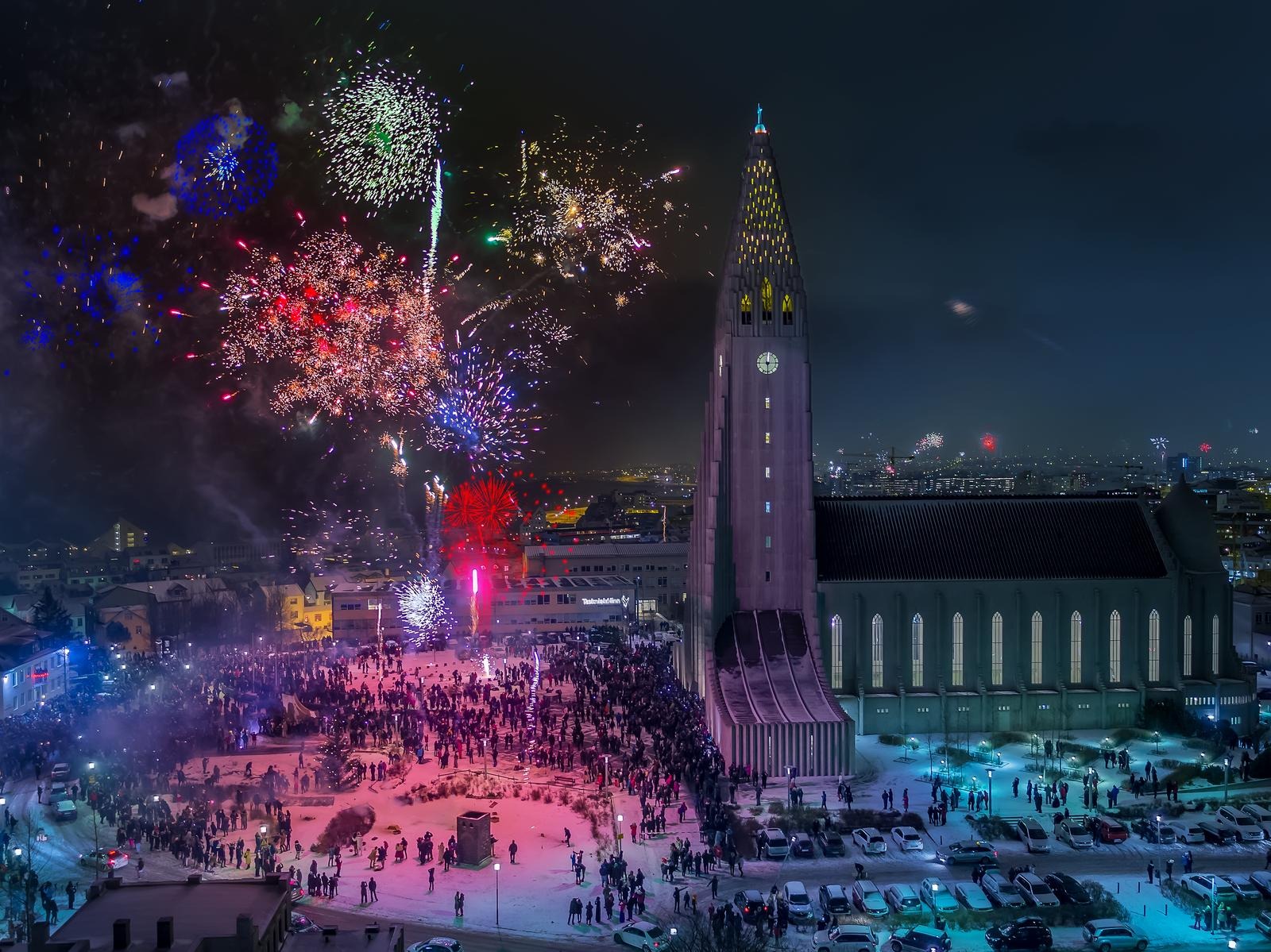
Things To Do in Iceland in December
Experience Iceland in December at its most magical – Adventure and wonder await at every turn.
Northern Lights in Iceland in December
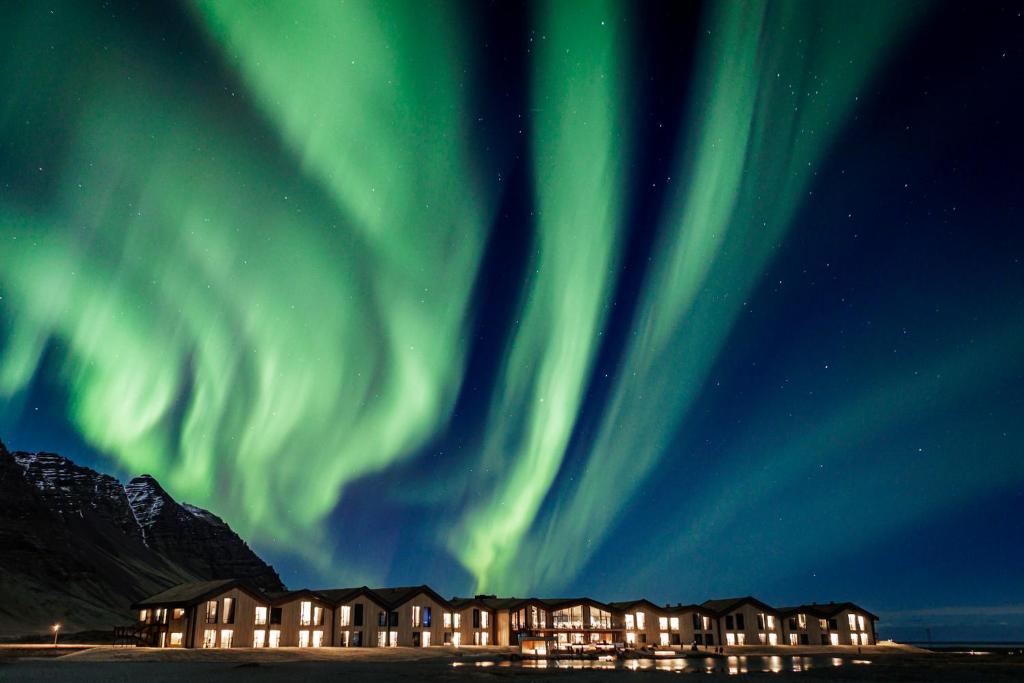
December in Iceland is the best time to chase the Aurora Borealis, as the nights are long and the air crisp, creating ideal conditions for the lights to shimmer across snow-covered landscapes. Clear skies, minimal light pollution, and calm winter nights make this the perfect season to witness the spectacle. To maximize your chances and enjoy the experience safely, it’s highly recommended to join a guided Northern Lights tour later in the evening, where experts lead you to the best viewing spots.
For the long winter nights chasing the Northern Lights, wear warm layers topped with a windproof down jacket, along with thermal base layers, insulated boots, gloves, and a hat to stay comfortable while waiting outdoors.
Ice Caving in Iceland in December
December is the prime time to explore Iceland’s ice caves, when glaciers are frozen solid and sunlight filtering through the ice creates surreal, crystal-blue tunnels. Most tours take place on Vatnajökull Glacier, Europe’s largest ice cap, and typically depart from Jökulsárlón Glacier Lagoon. Because it’s a long drive from Reykjavík, the best plan is to make it a 2-day trip, allowing time to travel safely, explore the lagoon, and join a guided tour.

Winter months provide the safest and most stable conditions, making guided tours essential. To fully enjoy the experience, dress in warm layers topped with a waterproof jacket, wear sturdy boots with good traction, gloves, and a hat, and be prepared for cold, damp conditions inside the caves. Ice caving on Vatnajökull is a breathtaking adventure, offering both awe-inspiring scenery and insight into Iceland’s glacial landscapes.
Glacier tours in Iceland in December
December is an ideal month to explore Iceland’s glaciers, when crisp winter conditions make hiking and ice climbing both exhilarating and safe. Popular glaciers for guided tours include Vatnajökull glacier and Sólheimajökull outlet glacier, each offering unique landscapes, from sprawling ice fields to dramatic crevasses. Tours range from glacier hikes across snow-covered ridges to ice climbing on towering ice walls, all led by experienced guides who ensure safety and provide expert insight into glacial formation and geology.
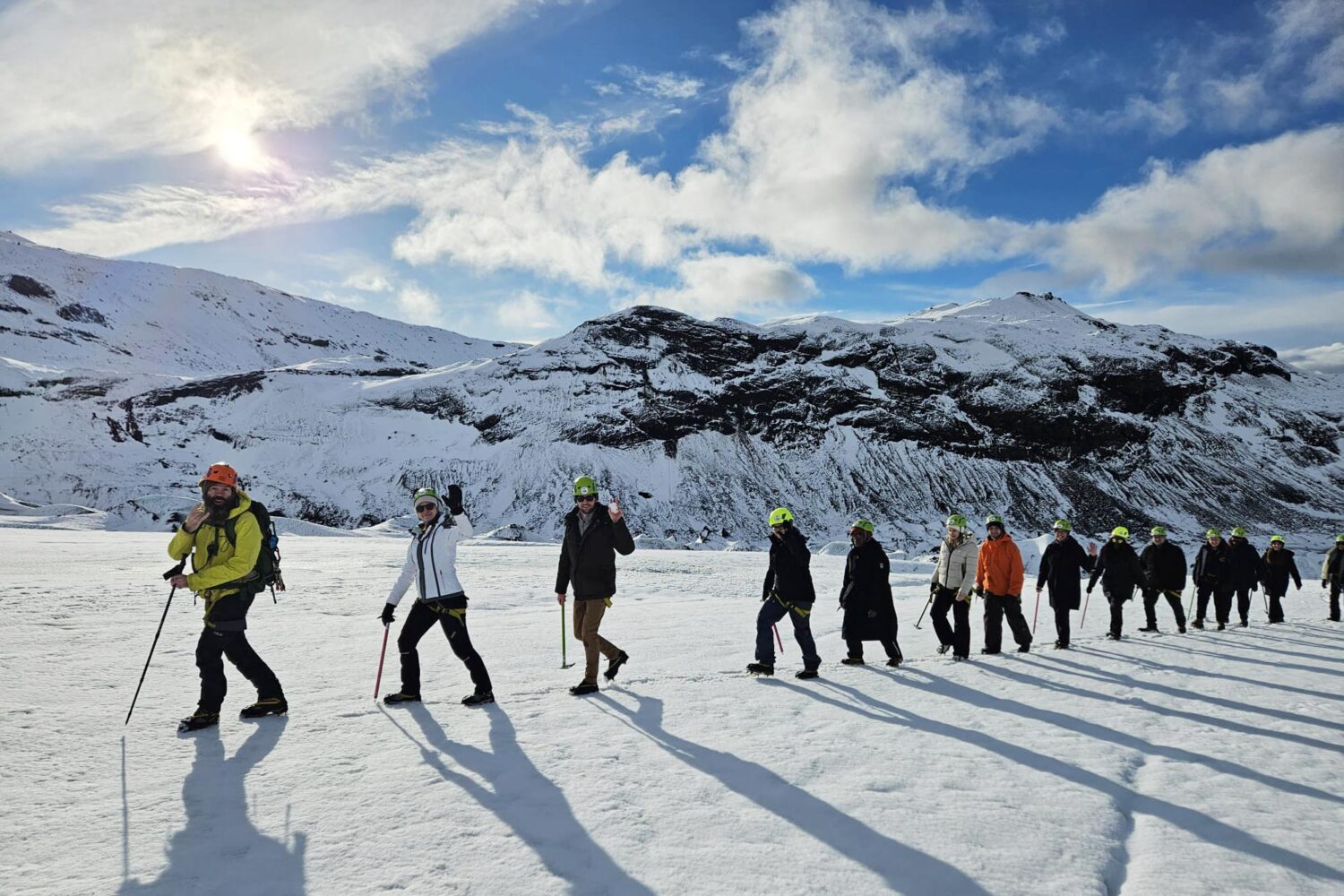
Most glacier tours, especially those on Vatnajökull, depart from towns like Jökulsárlón and often require a full-day or overnight trip, making them perfect for travelers seeking a more immersive glacial adventure. If you’re looking for a glacier hiking experience within a single day from Reykjavík, Sólheimajökull Glacier is your best option. Accessible for a day trip along the South Coast, it offers dramatic ice formations and crevasses, allowing visitors to experience Iceland’s glacial beauty without the long journey.
Snowmobiling tours in Iceland in December
December is a prime month for snowmobiling in Iceland, when glaciers and highlands are blanketed in snow and the crisp winter air adds an extra thrill to the ride. Popular locations include Langjökull Glacier, Mýrdalsjökull Glacier, and Eyjafelljakull glacier, each offering expansive snowfields, rugged terrain, and stunning views of frozen landscapes.
Guided tours cater to both beginners and experienced riders, ensuring safety while letting you feel the thrill of racing across Iceland’s icy wilderness. If you want to drive, you’ll need to show a valid driver’s license; otherwise, you’ll ride as a passenger, paired with someone who is licensed to steer.

For travelers based in Reykjavík, a snowmobiling tour on Langjökull Glacier is easily doable within a day. Many operators even offer a combined Golden Circle sightseeing tour, allowing you to experience iconic landmarks like Thingvellir National Park, Geysir, and Gullfoss waterfall alongside your high-speed glacier adventure.
Lava Caving tours in Iceland in December
Beneath Iceland’s snow-blanketed landscapes lies a hidden world of shadow and stone. In December, lava caves offer an extraordinary contrast to the icy outdoors: twisting tunnels carved by molten rock thousands of years ago, jagged walls glinting with unexpected crystal-like textures, and passages that seem to stretch into another realm entirely. Guided tours navigate these subterranean labyrinths safely while revealing the island’s volcanic secrets, from the slow cooling of lava flows to the delicate formations left behind.

Among Iceland’s most captivating lava caves are Raufarhólshellir, the iconic lava tunnel near Reykjavík, and Vatnshellir on the Snæfellsnes Peninsula. Raufarhólshellir lava tunnel, formed thousands of years ago, stretches for over a kilometer with dramatic, jagged walls and smooth passages, offering an accessible and mesmerizing introduction to Iceland’s subterranean world. On the western coast, Vatnshellir plunges 35 meters beneath Snæfellsjökull National Park, where twisting corridors and crystal-like formations showcase the raw power of ancient volcanic activity. Both caves are explored safely with guides, providing visitors an unforgettable journey through Iceland’s hidden, otherworldly landscapes, where geology and history intertwine beneath the winter snow.
Geothermal Spas in Iceland in December
When Iceland’s frost and snow set the scene, its geothermal spas become more than just a luxury—they’re a winter ritual.
Top Spas You Should Know
- Blue Lagoon (Reykjanes Peninsula): Iceland’s most iconic spa, located in a lava field near the airport, offering milky‑blue waters, silica mud masks and dramatic winter views.
- Sky Lagoon (near Reykjavík): A newer luxury spa with an infinity‑edge overlooking the North Atlantic, combining modern design and traditional bathing culture—especially atmospheric in winter.
- Krauma (West Iceland): Fed by Europe’s most powerful hot spring (Deildartunguhver), this multi‑pool spa set in a dramatic West Icelandic landscape is ideal for a winter soak away from crowds.
- Vök Baths (East Iceland): A remarkable experience of floating geothermal pools on Lake Urriðavatn—so pure the water is certified drinkable. Balances remote calm with design and warmth.
- Forest Lagoon (North Iceland): Opened in 2022, this forest‑surrounded spa near Akureyri features two infinity pools, swim‑up bars, a cold plunge, and a serene setting overlooking Eyjafjörður fjord.
- GeoSea Geothermal Sea Baths (North Iceland coast): Unique setting — geothermal seawater baths overlooking a fjord, especially striking in winter when the snow‑covered shoreline frames the scene.
- Laugarás Lagoon (South Iceland / Golden Circle region): A very recent addition, opened late 2025, this two‑tiered geothermal lagoon features a cascading waterfall, forest pool, cold plunge and sauna—located conveniently along the Golden Circle.
- Laugarvatn Fontana (South Iceland / Golden Circle region): A historic geothermal spa on the shores of Lake Laugarvatn, featuring natural steam baths, mineral-rich hot pools, and a sauna, with a cozy, rustic charm that’s perfect after a day exploring the Golden Circle.
- Secret Lagoon (Flúðir / Golden Circle region): One of Iceland’s oldest natural pools, this geothermal bath is tucked into a lush, steaming area with bubbling hot springs and small geysers, offering an intimate, authentic winter soak.
- Earth Lagoon Mývatn (Mývatn Nature Baths ) (north): This spa is undergoing a major rebrand and new facility construction, with the new name “Earth Lagoon Mývatn” set to launch in 2026.
- Hvammsvík Hot Springs – Just 45 minutes from Reykjavík along Hvalfjörður, this fjord-side spa features eight natural geothermal pools, a steam bath, and a swim-up bar, offering a serene winter soak with snow-dusted mountains and the chance to catch the Northern Lights.
- Húsafell Canyon Baths – Nestled in the highlands of West Iceland near Húsafell, this secluded geothermal experience features two (or three) warm pools at 30‑41 °C and a cold‑plunge stream, all accessed via a short guided hike down into a canyon surrounded by mountains and glaciers.
Travel tip: Book visits in advance, especially for evening slots, which offer the best lighting and the chance to see auroras above the steaming waters. Don’t forget to bring swimwear, be ready for the brisk air when leaving the pools, and make spa time part of your winter rhythm: venture outdoors, warm up in the water, then explore or relax as darkness falls.
Things to do in Reykjavik in December
Indoors Immersive Experiences in Reykjavik
When Reykjavík’s December chill sets in, the city offers a wealth of indoor immersive experiences that are both thrilling and educational. The LAVA Show and Volcano Express transport visitors into the heart of Iceland’s volcanic fury with high-tech simulations, fiery visual effects, and interactive displays. For a bird’s-eye perspective, FlyOver Iceland takes guests on a virtual flight over glaciers, waterfalls, and lava fields, offering sweeping panoramas without braving the winter cold.
Perlan, with its interactive Wonders of Iceland exhibition and iconic glass dome, immerses visitors in the country’s natural wonders, from glaciers to geysers, while the Whales of Iceland Museum brings Iceland’s ocean giants to life through exhibits and hands-on displays. History buffs can explore the National Museum of Iceland for a comprehensive look at the nation’s heritage, from Viking artifacts to modern milestones, and the National Gallery of Iceland for a showcase of Icelandic and international art. These experiences are complemented by Reykjavík’s art and cultural offerings, including the Reykjavík Art Museum and Árbær Open Air Museum, where Icelandic traditions are vividly recreated.
In December, Reykjavík’s indoor attractions provide a perfect balance to the island’s outdoor adventures — keeping visitors warm while offering interactive journeys through Iceland’s geology, wildlife, art, and history.
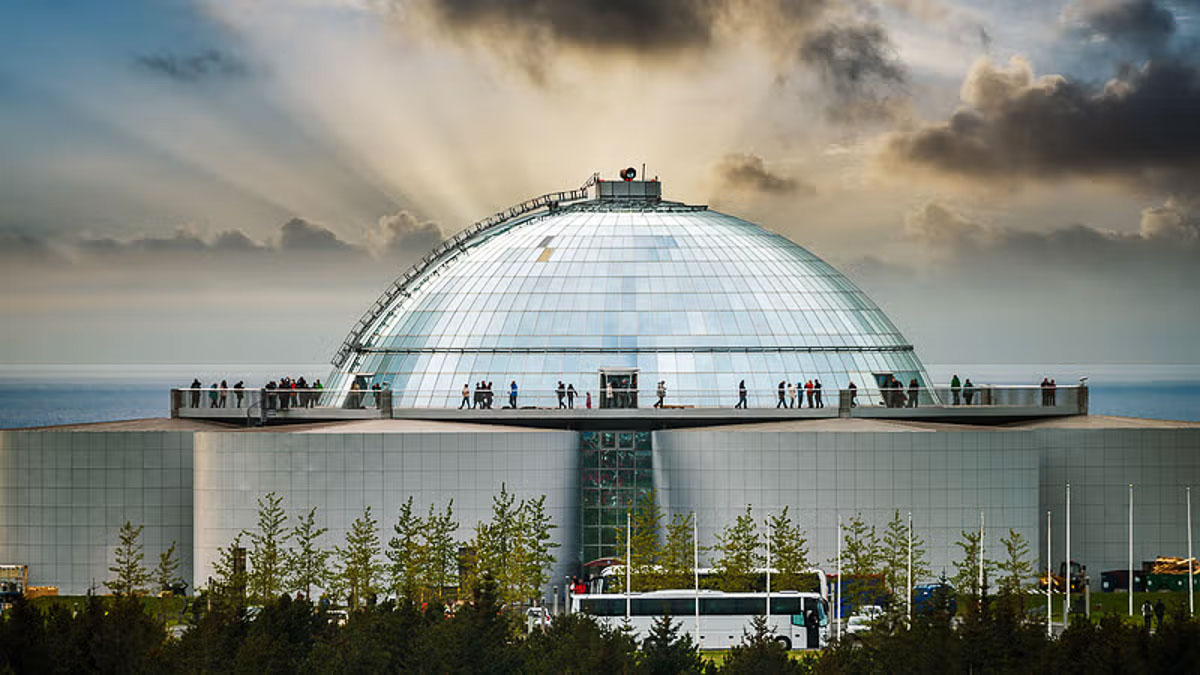
City Walk and Food Walk Tours in Reykjavik
Reykjavík’s compact streets and cozy winter atmosphere make walking tours one of the best ways to experience the city in December. City walks guide visitors through colorful neighborhoods, historic landmarks, and cultural hotspots, from the iconic Hallgrímskirkja Church to the lively Old Harbour, while sharing stories of Icelandic history, folklore, and contemporary life. The Reykjavík Christmas City Walking Tour adds a festive twist, highlighting the city’s holiday lights, seasonal decorations, and local traditions, making the short winter days feel especially magical.
Food lovers can choose from regular food tours or Icelandic traditional food tours, sampling the capital’s culinary highlights, from freshly caught seafood and artisanal cheeses to lamb soup, skyr, and seasonal pastries. Stops at cozy cafés, bakeries, and boutique eateries offer both warmth and flavor, giving visitors a taste of Icelandic culture alongside the city’s winter charm.
In December, these city and food walks — from festive Christmas tours to traditional culinary experiences — combine history, culture, and gastronomy, letting travelers explore Reykjavík on foot while soaking in the city’s snow-dusted, holiday-lit streets.

Best Iceland Itinerary in December
3-Day Itinerary: A Taste of Winter Magic
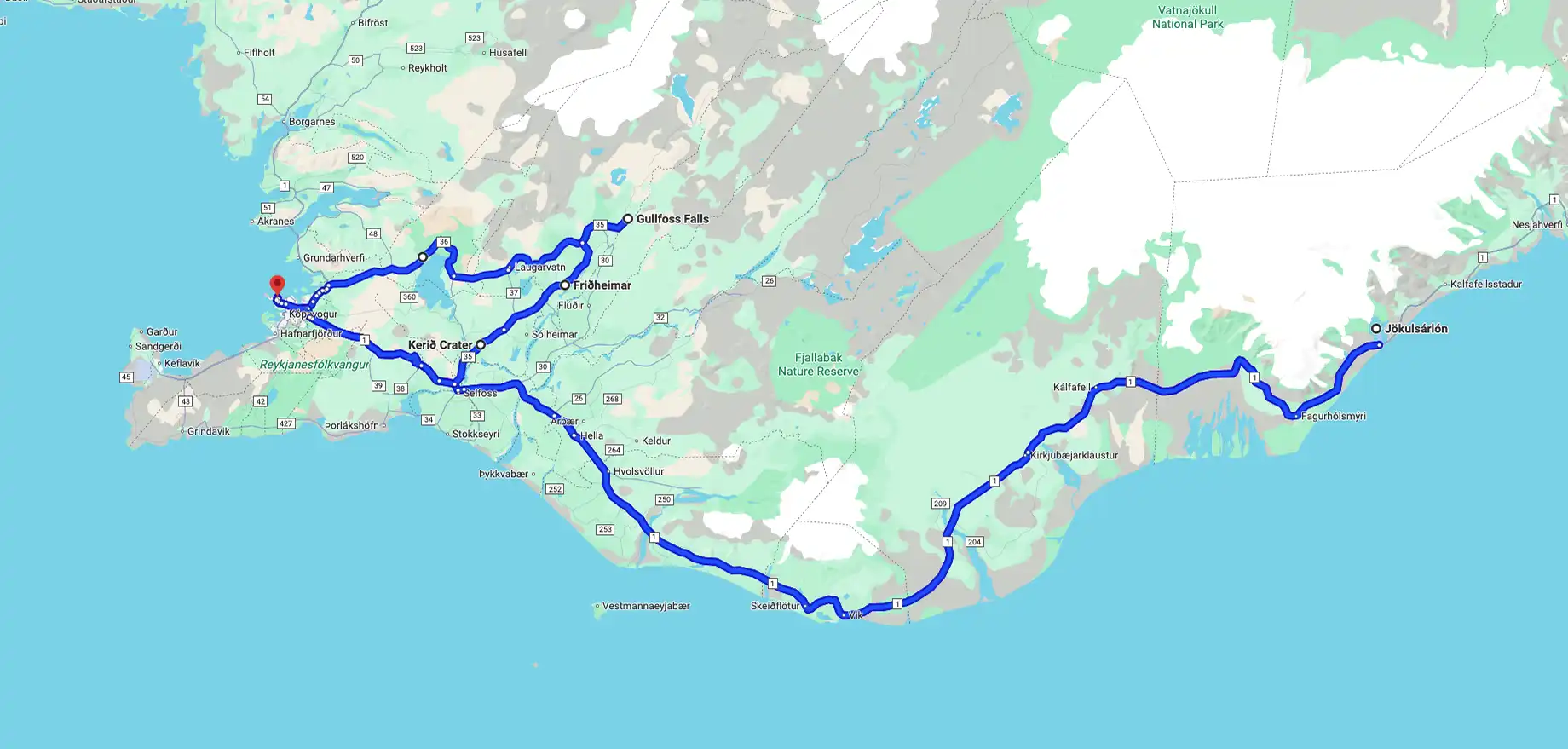
A short December getaway to Iceland promises intensity — three days of icy landscapes, geothermal warmth, and Arctic light.
Begin in Reykjavík, where the streets shimmer with Christmas lights and the scent of cinnamon drifts from cafés. Spend your first afternoon exploring Hallgrímskirkja, Harpa Concert Hall, and the cozy shops of Laugavegur,and enjoy a nice Nordic fusion dinner at Monkey’s or Tide. The next morning, head out along the Golden Circle, where the snow-covered plains of Þingvellir National Park, the hissing Geysir hot springs, and the frozen cascades of Gullfoss define Iceland’s winter spirit. End your day soaking at Ska Lagoon before returning to the city. On your final day, trace the South Coast to see Seljalandsfoss and Skógafoss, their mist turning to frost in the frigid air, and walk the black sands of Reynisfjara Beach, where basalt cliffs rise stark against the surf. Return to Reykjavík by evening — one last chance to chase the Northern Lights if the skies are clear.
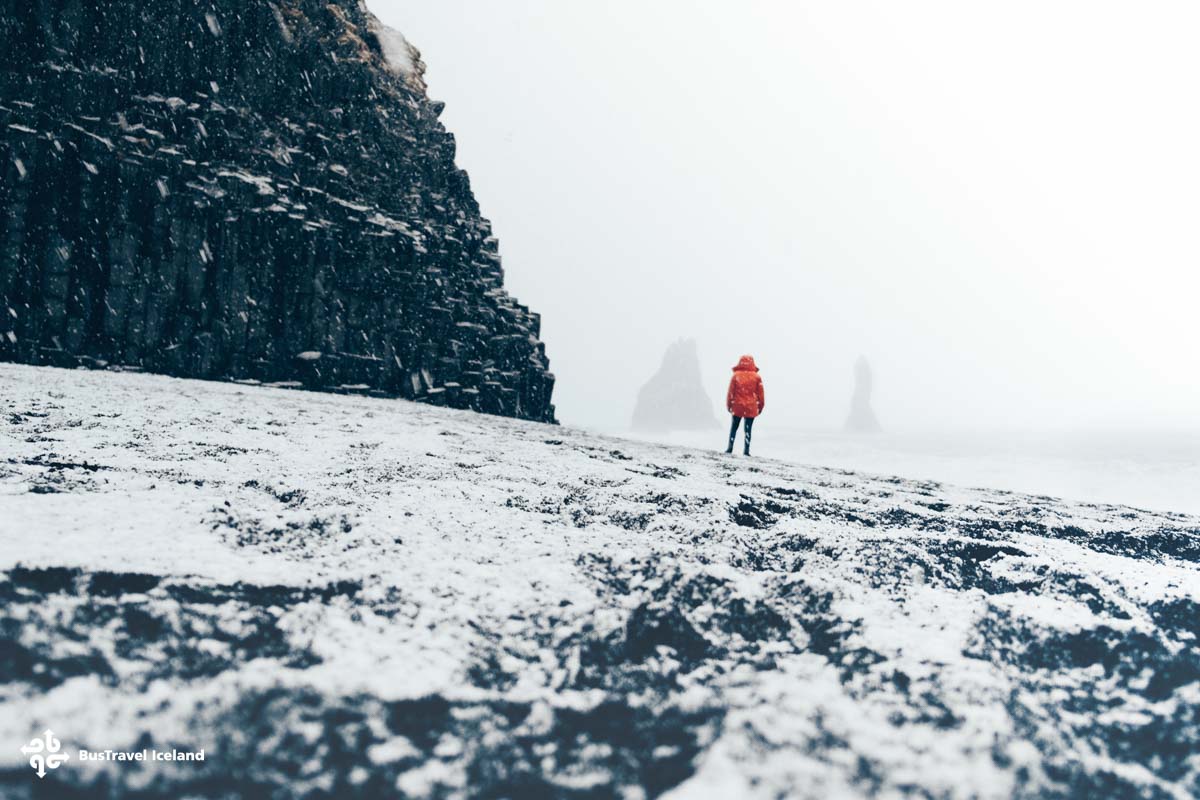
5-Day Itinerary: Winter Wonders and Warm Baths

December in Iceland offers icy landscapes, steaming geothermal pools, and festive charm. Begin with a full day on the Golden Circle, exploring Þingvellir National Park, Geysir, and Gullfoss, and warming up at Blue Lagoon or Laugarás Lagoon with a chance to catch the Northern Lights. Spend the next two days along the South Coast, marveling at Seljalandsfoss and Skógafoss, walking the black sands of Reynisfjara Beach, and hiking on Sólheimajökull Glacier, overnighting in nearby villages to soak in the rugged winter scenery. On day four, explore the Snæfellsnes Peninsula, from Kirkjufell Mountain to Arnarstapi and Vatnshellir Lava Cave beneath Snæfellsjökull Glacier. Conclude in Reykjavík, enjoying museums, festive streets, a Christmas walking or food tour, and a final soak at Sky Lagoon, reflecting on a magical month of the year in the Icelandic winter.
![Arnarstapi Snaefellsnes Peninsula-7983 [Photo credit to Danni Arndt]](https://bustravel.is/wp-content/uploads/2024/01/Arnarstapi-Snaefellsnes-Peninsula-7983.jpg)
7-Day Itinerary: The Full December Experience

Iceland in December is a winter playground of snow-dusted landscapes, glaciers, waterfalls, and steaming geothermal pools. Begin your 6-day journey on the Ring Road, where Iceland’s iconic sights unfold in serene winter beauty. Travel east to the South Coast, visiting Seljalandsfoss and Skógafoss, walking the black sands of Reynisfjara Beach, and hiking on Sólheimajökull Glacier. Continue to Vatnajökull National Park to explore Jökulsárlón Glacier Lagoon, Diamond Beach, and shimmering ice caves. Venture into the Eastfjords, stopping in quiet fishing villages and soaking in the Vök Baths amid fjord landscapes, then head north to Mývatn, exploring Hverir, Dimmuborgir, and the Mývatn Hot Springs, before reaching Akureyri. On your way back to the capital, explore West Iceland’s diverse landscapes, including Hraunarfossar and Barnarfossar waterfalls, Deildaitunguhver hot springs and more.
On the seventh day, journey west to the Snæfellsnes Peninsula, often called “Iceland in Miniature.” Snow-dusted lava fields, jagged cliffs, and fjords set the stage for Kirkjufell Mountain, Arnarstapi, iconic red-roofed church, Djupusandlon black pebble beach, Budir black church, all in one immersive day. Return to Reykjavík for your final evening, enjoying museums, festive streets, a Christmas walking or food tour, and a soothing soak at Blue Lagoon or Sky Lagoon, a fitting end to a full Icelandic winter adventure.
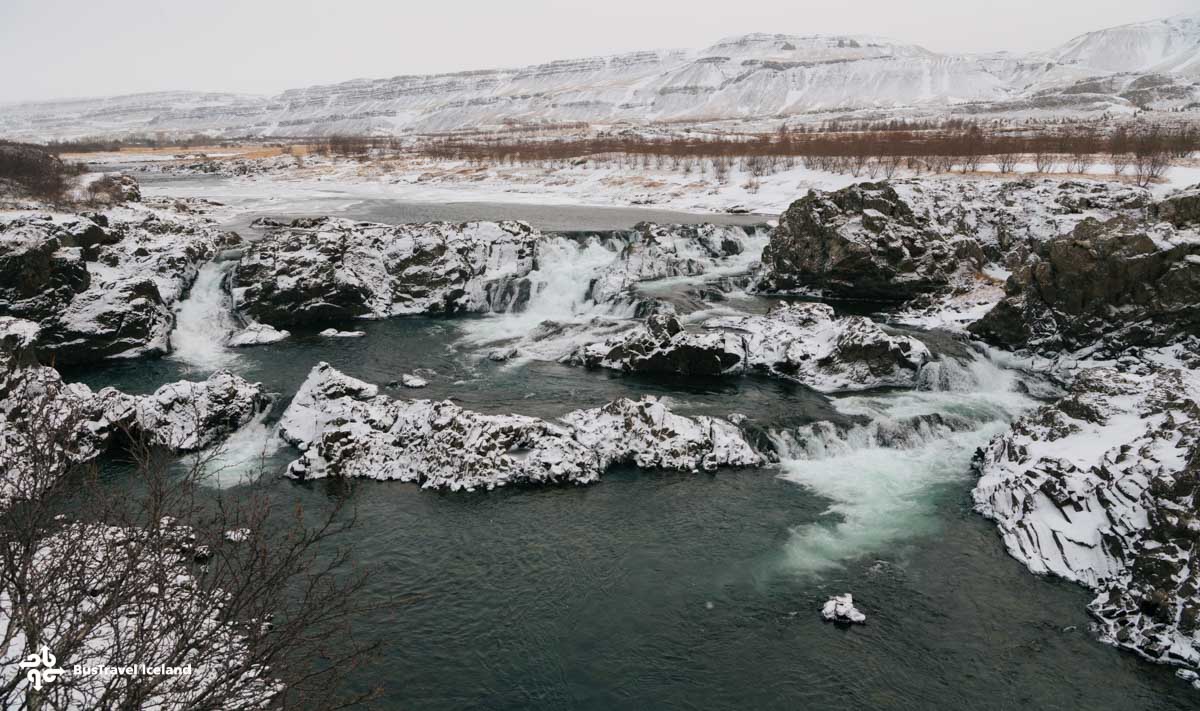
10-Day Itinerary: A Winter Journey Around Fire and Ice
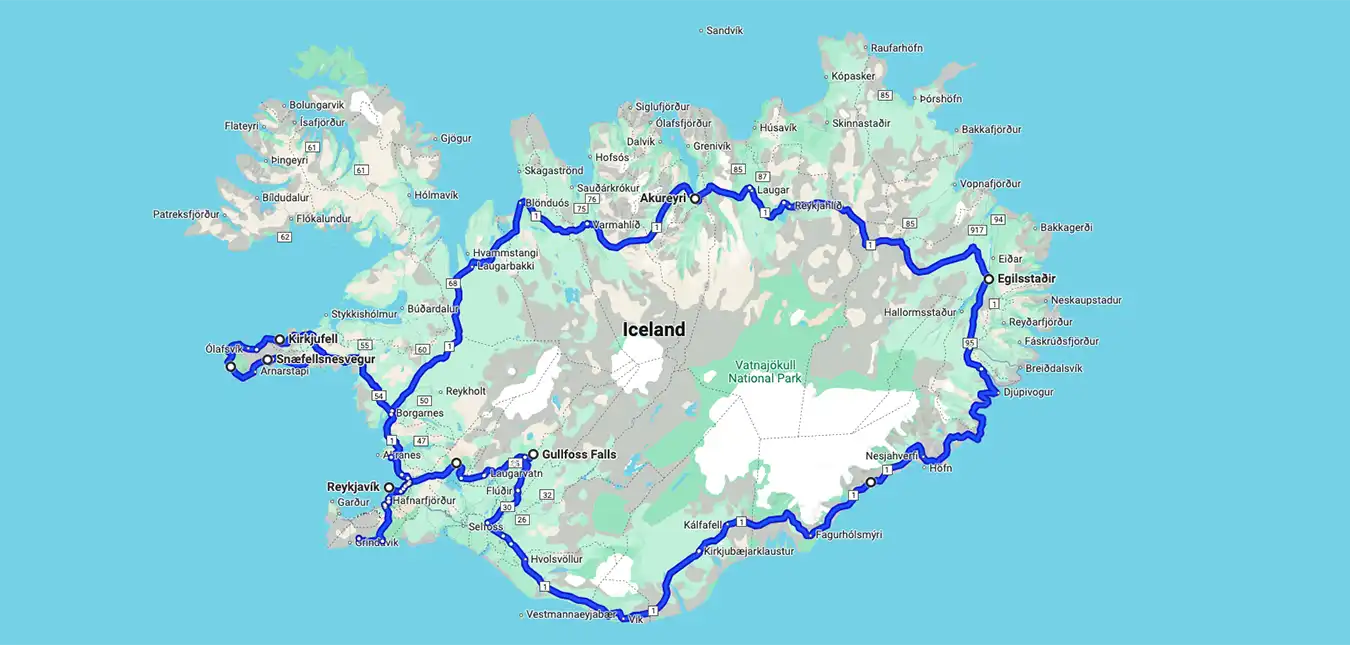
For a well-paced 10-day itinerary, you’ll have ample time to explore all the regions mentioned above while also delving deeper into Reykjavík and its cultural highlights. If you plan to venture into more remote, off-the-beaten-path areas, be sure to monitor road and weather conditions regularly, as Icelandic winters can be harsh, particularly in isolated regions.
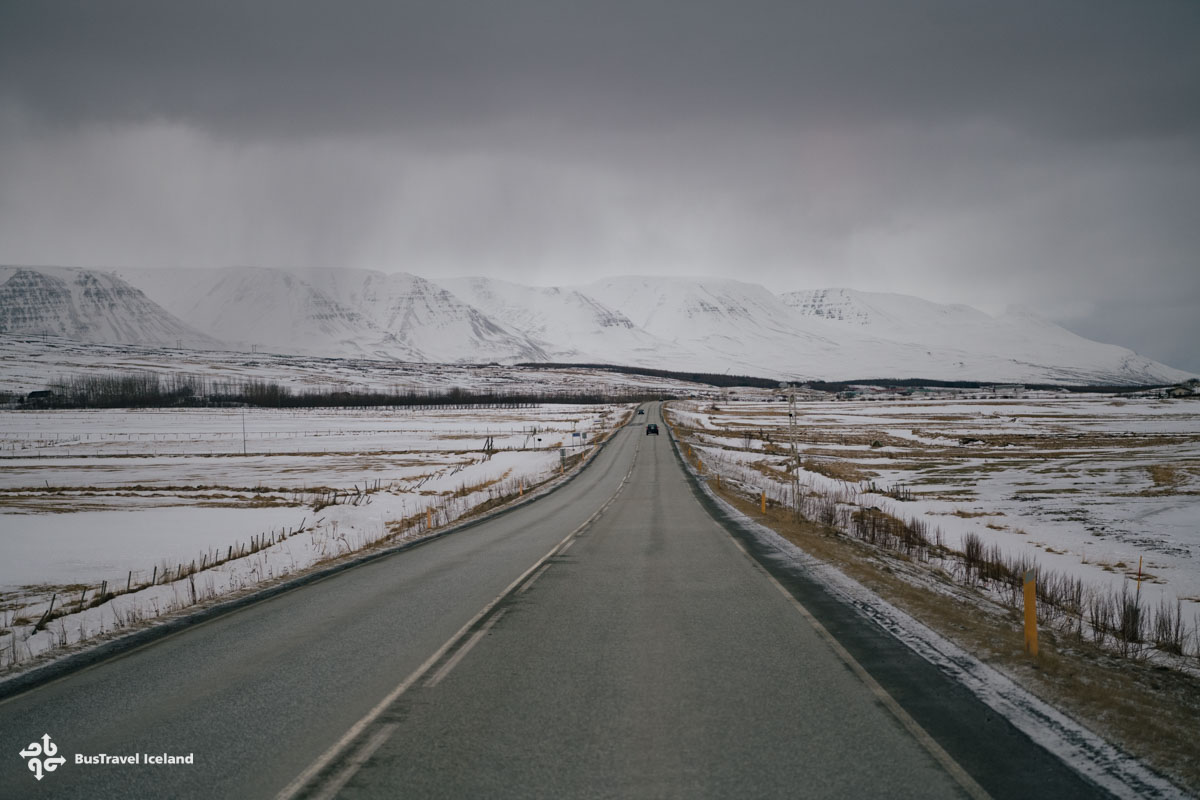
What’s So Unique About December in Iceland
December in Iceland is a month of magic and contrast — where the island’s wild nature meets its warm-hearted traditions.
My first visit to Iceland was in December, and the moment the airport shuttle emerged from miles of dark, lava-strewn landscape and the scattered lights of Reykjavík appeared over the hills, I was mesmerized. It was a city unlike any I had known — no towering skyscrapers, no vertical sprawl, but a low, colorful Nordic town where cozy houses and winding streets glowed softly against the winter night, the lights stretching like a shimmering carpet all the way to the sea.
That December, I wandered those snowy evening streets, savoring rich coffee and freshly baked pastries at Sandholt, hiked through the snow-covered mountains of Reykjanes near Lake Kleifavatn, and explored the volcanic crater of Burfell in the capital region. I delved into Icelandic folklore, learning about the hidden people and traditional Christmas customs, and experienced firsthand the spirited celebrations of New Year’s Eve. As if the day couldn’t get more magical, I even stumbled upon a baptism at Hallgrímskirkja Church, a moment that made the city feel alive with culture, community, and a distinctly Icelandic sense of wonder.
After that wintery vacation, I was completely captivated by Iceland — its landscapes, traditions, and the magic of December. I knew I would return. Now, I’m putting together this travel guide so you can experience the same enchanting month I did, exploring Iceland like a local.
For me, December reveals Iceland at its most authentic — raw, luminous, and full of life, a place where winter’s darkness becomes its greatest wonder.
![Reykjavik downtown view from Hallgrimskirkja church tower Winter scene of downtown Reykjavik. [Photo credit to Yanshu Li]](https://bustravel.is/wp-content/uploads/2020/12/Reykjavik-downtown-view-from-Hallgrimskirkja-church-tower.jpg)
